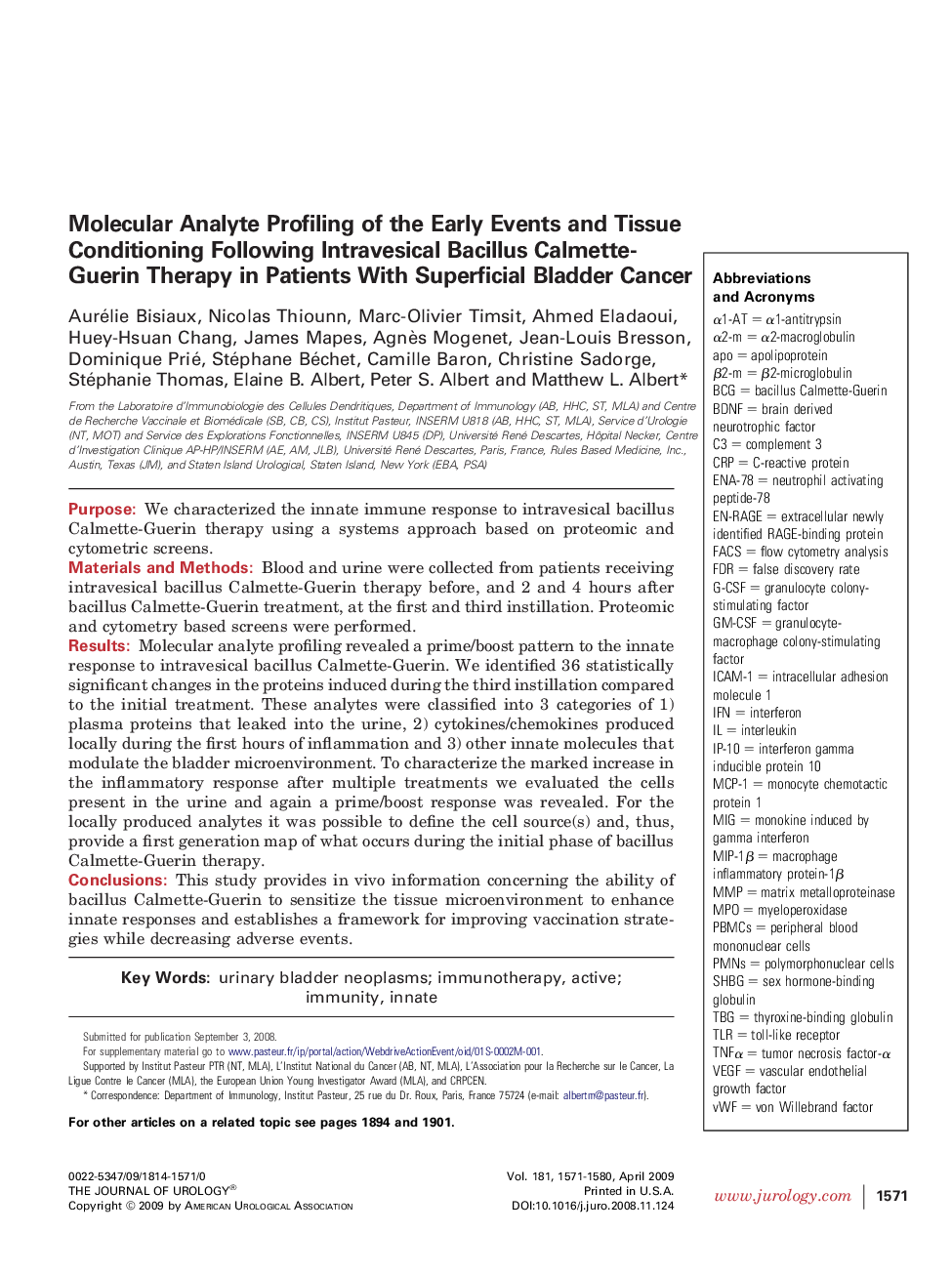| Article ID | Journal | Published Year | Pages | File Type |
|---|---|---|---|---|
| 3876128 | The Journal of Urology | 2009 | 10 Pages |
PurposeWe characterized the innate immune response to intravesical bacillus Calmette-Guerin therapy using a systems approach based on proteomic and cytometric screens.Materials and MethodsBlood and urine were collected from patients receiving intravesical bacillus Calmette-Guerin therapy before, and 2 and 4 hours after bacillus Calmette-Guerin treatment, at the first and third instillation. Proteomic and cytometry based screens were performed.ResultsMolecular analyte profiling revealed a prime/boost pattern to the innate response to intravesical bacillus Calmette-Guerin. We identified 36 statistically significant changes in the proteins induced during the third instillation compared to the initial treatment. These analytes were classified into 3 categories of 1) plasma proteins that leaked into the urine, 2) cytokines/chemokines produced locally during the first hours of inflammation and 3) other innate molecules that modulate the bladder microenvironment. To characterize the marked increase in the inflammatory response after multiple treatments we evaluated the cells present in the urine and again a prime/boost response was revealed. For the locally produced analytes it was possible to define the cell source(s) and, thus, provide a first generation map of what occurs during the initial phase of bacillus Calmette-Guerin therapy.ConclusionsThis study provides in vivo information concerning the ability of bacillus Calmette-Guerin to sensitize the tissue microenvironment to enhance innate responses and establishes a framework for improving vaccination strategies while decreasing adverse events.
